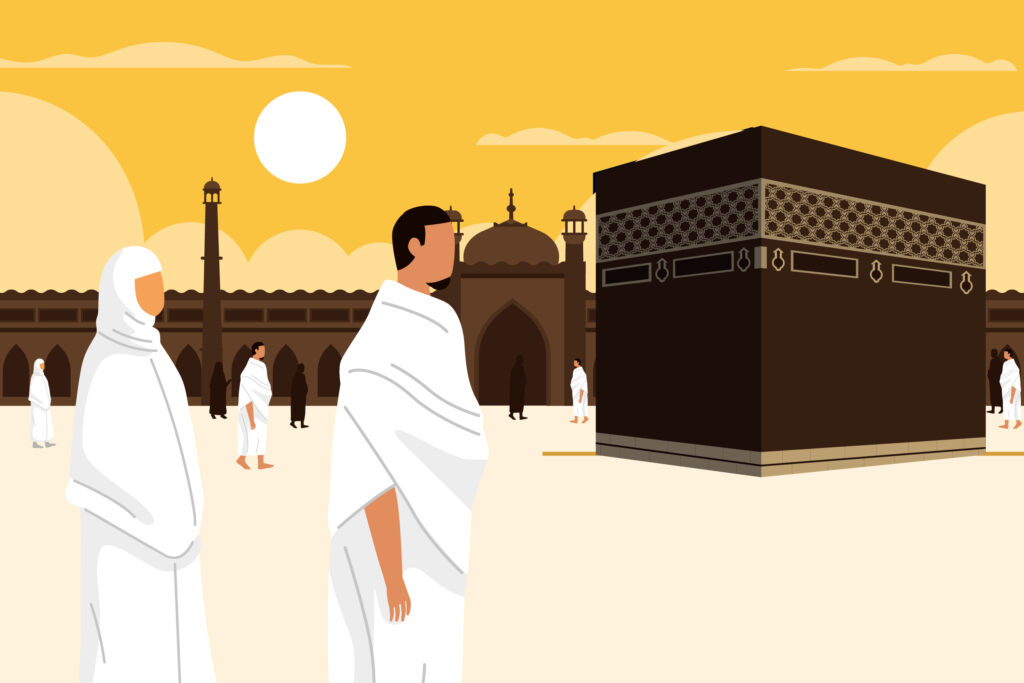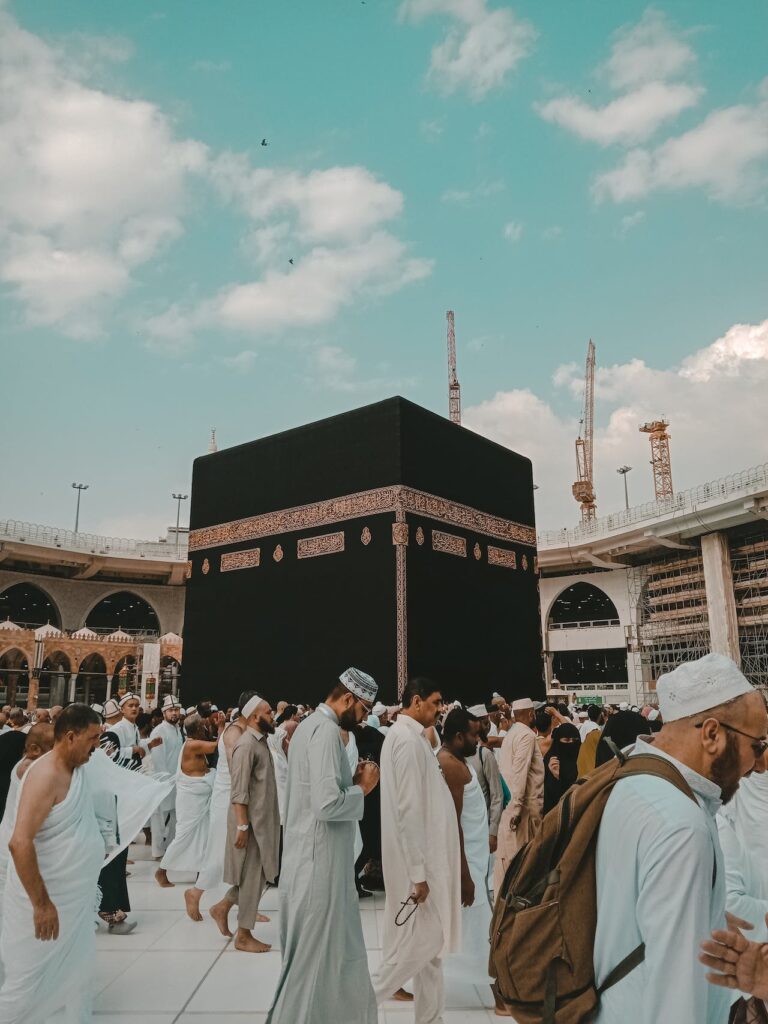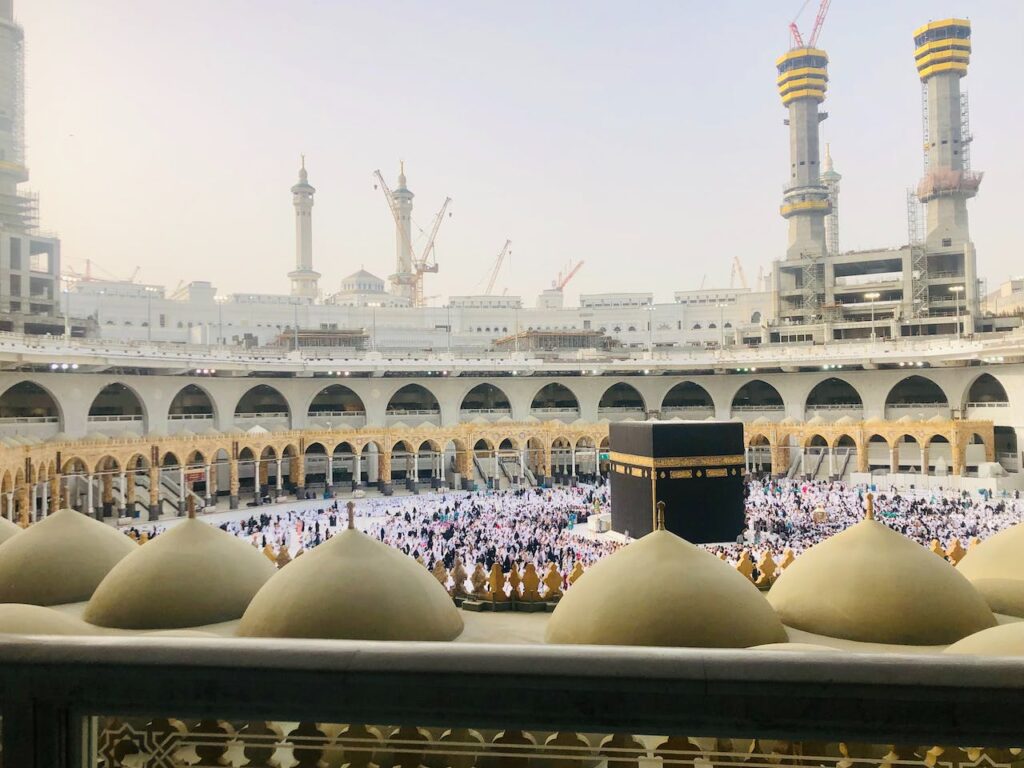When it comes to Islamic pilgrimage, one of the most iconic and sacred is the rituals of Tawaf, where Muslims walk around the Kaaba.
The Kaaba, located in the center of the Masjid al-Haram in Mecca, holds a special significance in Islam. It is believed to be the house of Allah and the holiest site in the religion.
During the Hajj and Umrah pilgrimages, Muslims perform the Tawaf by circumambulating the Kaaba seven times.
What is Tawaf?
Tawaf is a religious ritual performed by Muslims, particularly during the Hajj pilgrimage and Umrah. It involves circling the Kaaba, the sacred black stone structure located in the center of the Grand Mosque in Mecca, Saudi Arabia.
The Kaaba is considered the holiest site in Islam and serves as the focal point for Muslims around the world during their prayers.
The Tawaf represents a symbolic act of devotion and unity, as Muslims from all walks of life come together to perform this ritual.
It is a physical manifestation of their spiritual journey and a way to express their love and reverence for Allah.
During Tawaf, pilgrims walk around the Kaaba in a counterclockwise direction. This circular movement is repeated seven times,
with each revolution starting and ending at the black stone corner of the Kaaba known as the Hajr-e-Aswad.
Pilgrims may also choose to touch or kiss the black stone as they pass by, although this is not obligatory.
The Tawaf is a deeply spiritual and emotional experience for Muslims. It serves as a reminder of their connection to Allah and the unity of the Muslim ummah (community),
transcending cultural and geographical boundaries. It is a time for reflection, prayer, and seeking forgiveness.
Now that we have a basic understanding of what Tawaf is, let’s delve into its historical significance and how it has evolved over time.
Rituals of Tawaf
Performing Tawaf involves a set of rituals and practices that pilgrims follow during their circumambulation of the Kaaba.
These rituals add depth and meaning to the act of Tawaf, enhancing its spiritual significance. Let’s take a closer look at the key rituals of Tawaf:
Firstly, Circling the Kaaba:
Pilgrims walk around the Kaaba in a counterclockwise direction, starting and ending at the Hajr-e-Aswad corner. This circular movement signifies the unity and devotion of the Muslim ummah.
Secondly, Supplications and Prayers:
While performing Tawaf, pilgrims engage in supplications and prayers. They may recite verses from the Quran, seek forgiveness, and offer personal prayers to Allah.
Moreover, Other Rituals of Tawaf
- Touching or Kissing the Black Stone:
As pilgrims pass by the Hajr-e-Aswad corner, they may choose to touch or kiss the black stone.
This act is considered a gesture of reverence and love for Allah, although it is not obligatory.
- Praying at Maqam Ibrahim:
After completing each circle of Tawaf, pilgrims offer two raka’s (units) of prayer at the Station of Ibrahim (Maqam Ibrahim),
located near the Kaaba. This station marks the place where Prophet Ibrahim stood while constructing the Kaaba.
- Drinking Zamzam Water:
After finishing Tawaf, many pilgrims drink from the well of Zamzam, which is located within the precincts of the Grand Mosque.
Zamzam water is considered blessed and is believed to have healing properties.
These rituals of Tawaf create a deeply spiritual and transformative experience for pilgrims. They serve as a reminder of their connection to Allah and their commitment to the principles of Islam.
By engaging in these rituals, Muslims express their devotion and seek closeness to Allah.
FAQs
َQ: What Should I Do If I Need Help During the Tawaf Ritual?
A: The best thing to do if you need help during the Tawaf ritual is to reach out to a nearby volunteer or guide who will be able to assist you.
If this is not possible, you can ask someone politely for directions.
َQ: What Are The Conditions For Tawaf??
A: The scholars mentioned several conditions for the validity of Tawaf, for example:
- Being Muslim
- Being full of mind.
- Have the intention (niyyah).
- Wearing Ihram clothing.
Know more about the conditions of Tawaf.
In conclusion,
Tawaf is a sacred ritual in Islam that holds great significance for Muslims around the world. It involves circling the Kaaba in Mecca as an act of devotion and unity. Throughout this article, we have explored the meaning and rituals of Tawaf.
By understanding the rituals and significance of Tawaf, Muslims can approach this sacred act with a deeper sense of spirituality and reverence.






